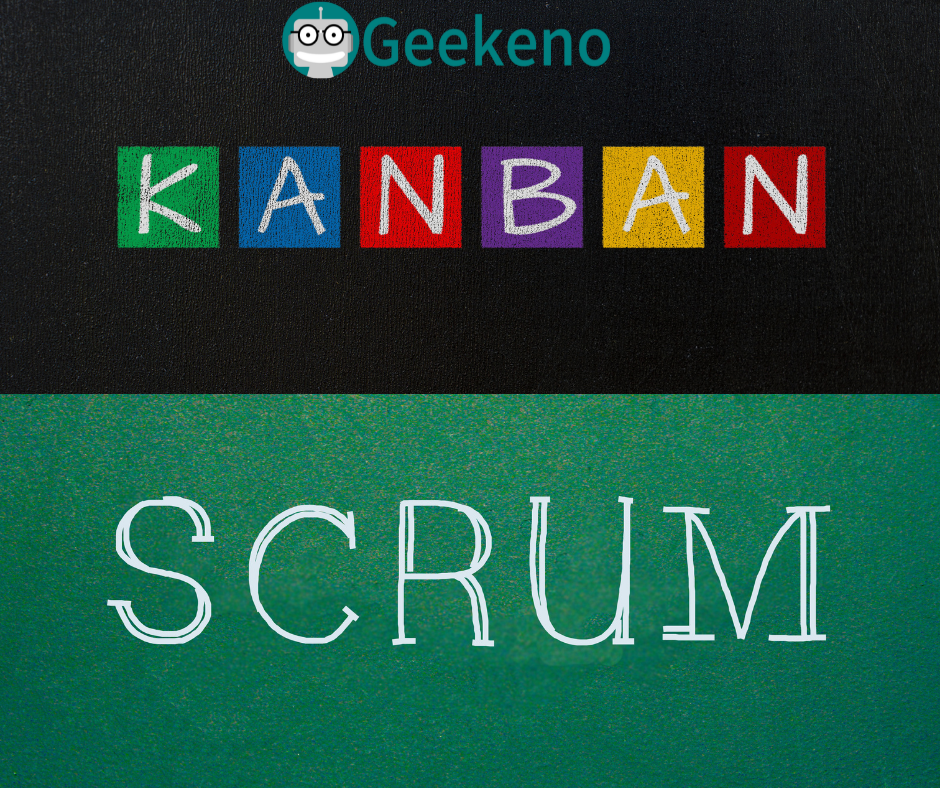Which technique is more powerful, Scrum or Kanban?
Assuming you are going to set out on dealing with a completely new undertaking, we are certain that this question should play at the forefront of your thoughts.
Scrum and Kanban have become very famous and have displaced the previously predominant cascade model. This isn’t shocking given that the two systems have been displayed to further develop execution through upgrading work productivity and correspondence.
Here, we will explore the remarkable qualities of the subject “Kanban versus Scrum” to help you in choosing the best philosophy for your undertaking on the board.
What Is Kanban?
Kanban is a technique for envisioning and observing the cycle. Taiichi Ohno, the dad of the Toyota Production System, laid out the structure. A few major organizations have changed to Kanban, three of them being Zara, Pixar, and Spotify.
Kanban might be connected back to a Japanese expression that signifies “visual or billboard sign.” This isn’t shocking given that it will likely expand throughput utilizing cards and a board with exercises that show the conveyance stream. Besides, the board is many times ordered into three fundamental sections.
These sections may be named as follows: to do, in process, and finished. By the by, additional sections might be added to fulfill the needs of a particular programming association or group (e.g., survey, Testing, sending, and so forth.). What’s more, cards are frequently moved from one segment to another, contingent upon their advancement.
Is Kanban Agile?
Kanban is an Agile-based strategy that is noticeable, even, and adds fundamentally to work association for even enormous groups. Besides, since it is exceptionally versatile, Kanban might be effortlessly custom-made to the requests of a group, especially in the event that circumstances change frequently.
How Kanban Is Used?
To involve a Kanban framework for your undertakings, you would isolate it into part errands. Accordingly, Project X would include:
Plan A
Plan B
Plan C
Plan D
An engineer would have been doled out to each undertaking (or designers’ group). At first, each work would be recorded in the board’s To Be Done segment. Then, at that point, when each group starts chipping away at the specific task, the status would change from Will Be Done to In Progress.
At the point when the task is done, it will move to the Peer Review segment. The work may be moved to Testing when it has been assessed. Subsequent to Testing being finished, on the off chance that it is ready to proceed, the occupation is set apart as Done. If important, the work can be gotten back to underway.
What Is Scrum?
A rugby match motivated the Scrum project the board design. Ikujiro Nonaka and Hirotaka Takeuchi, the makers, portrayed Scrum to expand the adaptability and speed of an improvement cycle. Notwithstanding, it required quite a long while for Ken Schwaber and Jeff Sutherland to completely execute it interestingly.
Scrum’s three points of support are transformation, assessment, and straightforwardness. Straightforwardness ensures that all partners responsible for the work’s result comprehend and see urgent parts of the methodology on neutral ground.
The investigation involves checking on progress to guarantee that nothing hinders the group’s advancement toward a specific goal. At last, variation is responsible for altering the methodology in light of the assessment results, which assists in improving it.
Likewise, remember about Kaizen, which demonstrates the gathering should gain as a matter of fact and attempt to work on the cycles and results of their work.
How Is Scrum Used?
Scrum depends on the logical procedure of realism, which substitutes an algorithmic strategy with a heuristic one. The Scrum strategy is organized as follows:
Accumulation of items
Run readiness
Excess for Sprint
The everyday Scrum
Increase
Run assessment
Review run
Assuming the work is done after the last stage simultaneously, it can leave Scrum. In the event that extra work is required, the work gets back to the Sprint Planning step, and the method restarts.
Are Scrum and Agile the Same Thing?
Scrum is among the designs utilized in the Agile strategy. Lithe versus Scrum is practically equivalent to soccer versus a game. Besides, Scrum is an Agile construction, like how football is a game. Scrum was used and appeared to function admirably, eventually turning into the center of Agile programming.
Similitudes Between Kanban And Scrum
Scrum and Kanban are firmly associated with the ideas of the Agile Manifesto and the Lean Philosophy. This suggests they share a few qualities that are intended for an Agile improvement process. Allow us to examine a couple of the similitudes:
Restricting Work In Progress
Kanban confines how much Work in Progress (WIP). Scrum tracks the speed and confines each run’s undertakings relying upon assessment, like in timetables. During the run, errands will be created.
Adaptability
The Agile Manifesto’s most memorable reason is “Associations and Individuals over Tools and Processes.” Both designs take into consideration change and are unbelievably versatile. Be that as it may, assuming you’re pondering “Kanban versus Scrum,” Kanban is significantly more adaptable.
Pull Scheduling
A draw planning system is utilized in Kanban and Scrum. This connotes that there are plenty of exercises that should be finished. They are alluded to as an overabundance in Scrum. In a joint effort with the entrepreneur, the specific venture group picks things from the build-up, focuses on and examines them, and puts them on time for each run.
An item build-up isn’t needed in Kanban, yet it is practically consistently utilized in projects. Regularly, the Kanban bunch and the client concur just to draw errands from the absolute first section (e.g., generally new assignments, or exercises with explicit markers at first, and so on.).
Exact Process
Kanban and Scrum are exact systems that advance ceaseless enhancement. For instance, expect that WIP is a variable limit metric in Kanban. Thus, you might change the structure to upgrade your interaction.
Perception
Sheets are used to screening work progress, including both Kanban and Scrum. When you consider how well these sheets are made due, the inquiry “Kanban versus Scrum sheets” is easy to reply to. More or less, a Scrum board is erased for every most recent venture, while a Kanban board contains errands (in various sections in light of stage) protected all through the improvement stage.
Early And Continuous Delivery
Kanban and Scrum are both worried about conveying possibly “shippable” pieces of work rapidly and habitually. This might happen after each emphasis in Scrum, for the most part after an exhibition.
Separating The Effort Into Small, Clear Activities
Huge endeavors are constantly parted into pretty much nothing, more sensible lumps that can be made sensibly quickly. This is among the qualities that differentiate Agile from the cascade approach.
Regardless of their clear similitudes, the subject of Kanban versus Scrum stays unanswered.
Self-Organized Teams
Kanban and Scrum systems expect that improvement groups are self-coordinated.
Jobs
Three unmistakable jobs characterize a Scrum group:
a. Item owner
b. Improvement group
c. Scrum ace
Besides an undertaking director, there appear to be no predefined obligations on the Kanban side.
Planning
Scrum partitions planning into two to four-week stages. Then again, Kanban doesn’t stick to a schedule. In addition, Kanban utilizes nonstop conveyance by means of Kanban sheets.
Task Progress Measurement
Scrum groups track progress utilizing reports like burnup and burndown outlines. Then again, Kanban groups utilize a nonstop stream graph to follow the advancement of a venture.
Scrum Vs. Kanban
As you might have speculated, Scrum is a complex and unbending strategy with many principles and an exceptionally specific design to which groups should consent. Then again, Kanban has an adaptable programming procedure with fewer principles and more direct construction. Both, be that as it may, help groups in sticking to the crucial Agile upsides of participation and versatility.
Picking the best methodology for your group requires considering a couple of fundamental viewpoints:
What number of systems do you expect for your group? Scrum is for the most part the prevalent method on the off chance that your staff works better utilizing characterized rules and necessities. Kanban is more versatile.
Is it true or not that you are dependent on other workgroups? At the point when your work is reliant upon people and groups past your Scrum group, the exact arranging techniques for Scrum are more useful. Interestingly, Kanban works best when your group can complete your errands as a whole.
Do your activities rely upon each other? For instance, Scrum’s planning performs extraordinary when certain things in your rundown should be done before somebody can start. Then again, Kanban works best when each occupation should be possible freely for others.
Neither one of the strategies is essentially better than another. The “best” choice for you is still up in the air by your association’s construction, bunch inclinations, and the idea of your errand and undertaking.
You don’t need to adhere to one system or the other constantly. In all actuality, groups who have been working together for quite a while may easily move between the two methods for various kinds of undertakings and work.
Summary
Every one of these instruments is fantastic for project observing and keeping up with designers’ speed, so they follow through on time. Be that as it may, which you use is not entirely set in stone by your objectives, groups, and needs. Pick accurately, and your undertaking and your project development lifecycle will flourish as a result.




